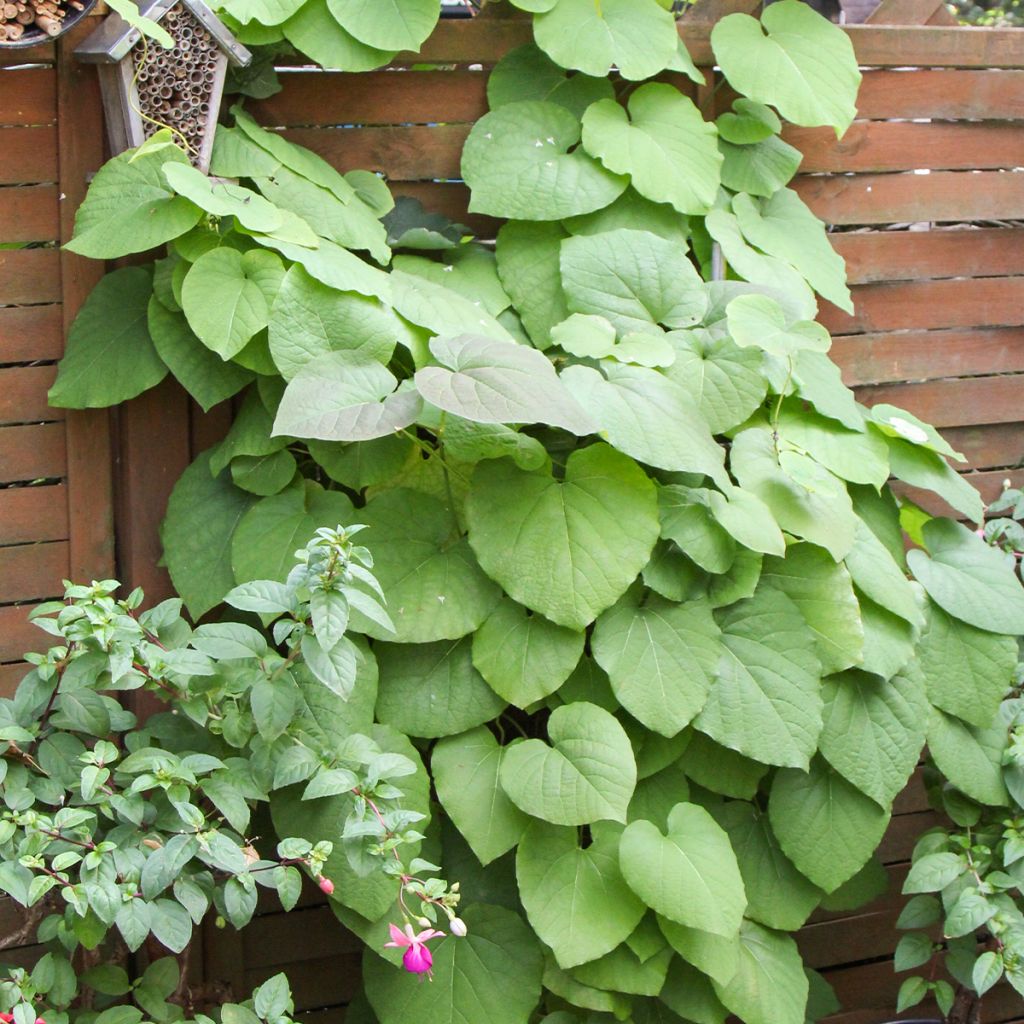

Aristolochia macrophylla
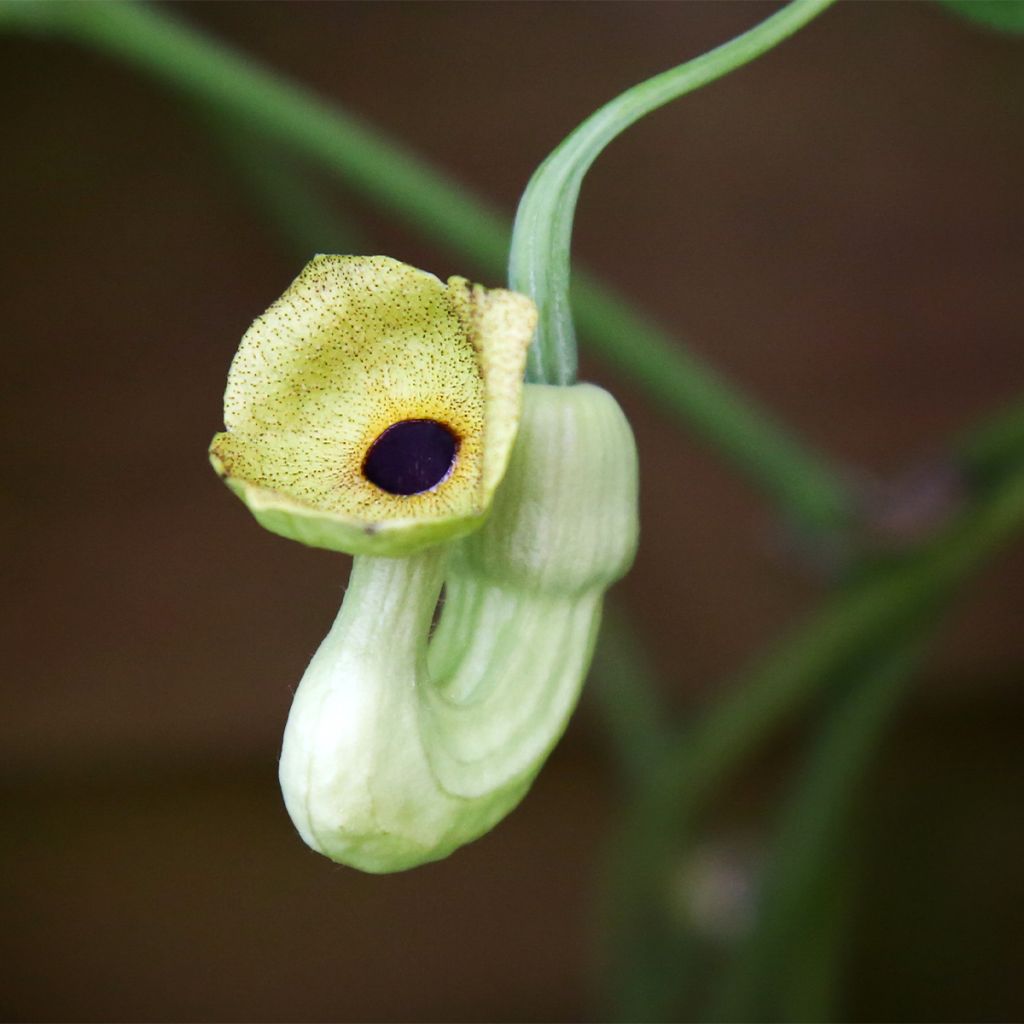

Aristolochia macrophylla
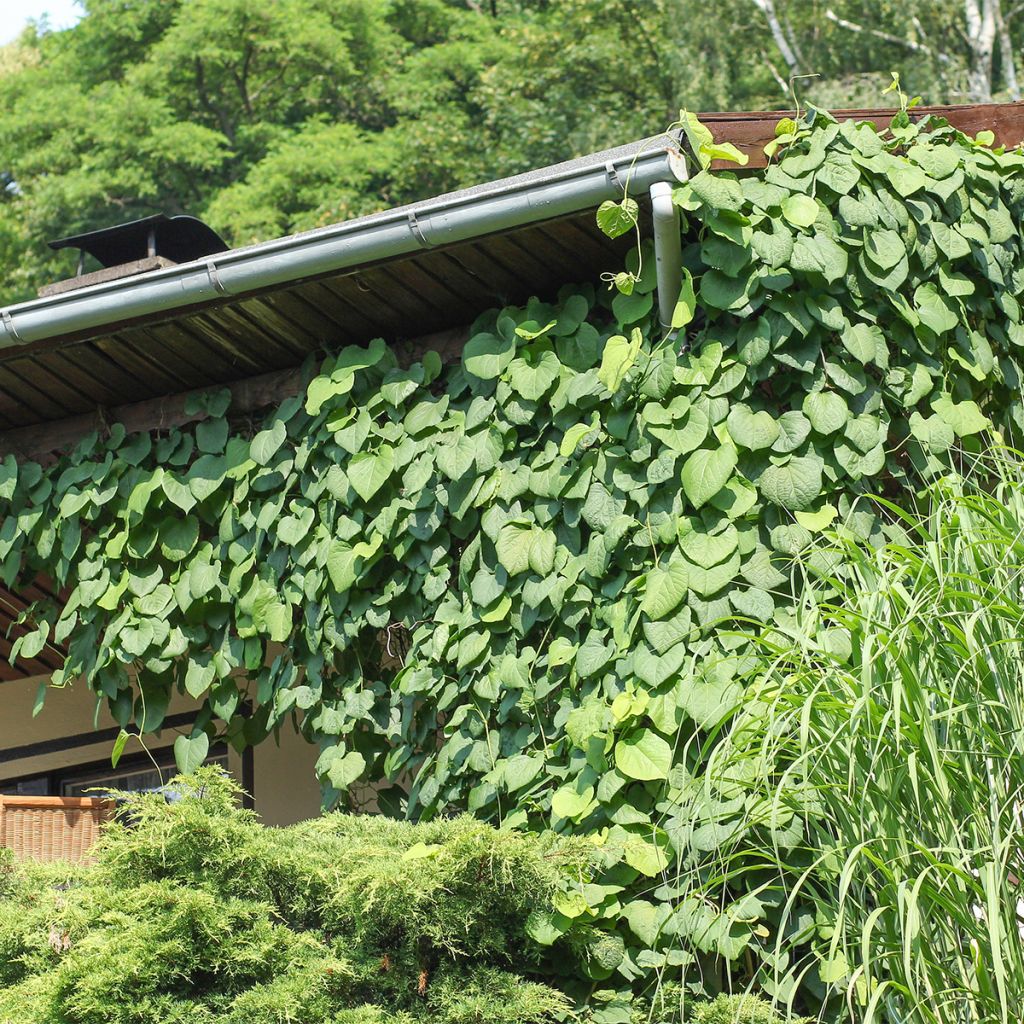

Aristolochia macrophylla
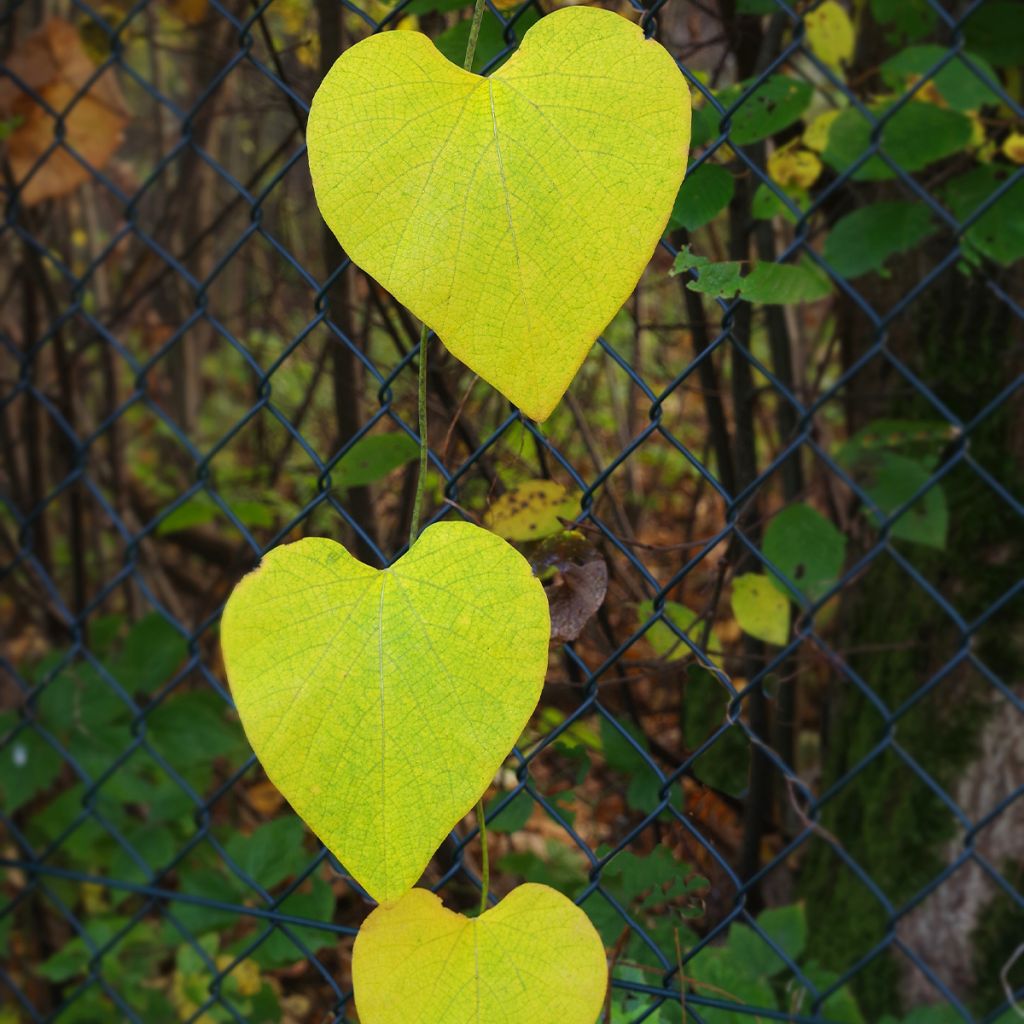

Aristolochia macrophylla
Aristolochia macrophylla
Aristolochia macrophylla
Dutchman's Pipe, Pipe Vine, Big Sarsaparilla, Broad-leaved Birthwort, Wild Ginger
This item cannot be shipped to the selected country
Delivery charge from €5.90
Delivery charge from €5.90
Oversize package delivery charge from €6.90
More information
Schedule delivery date,
and select date in basket
This plant carries a 6 months recovery warranty
More information
We guarantee the quality of our plants for a full growing cycle, and will replace at our expense any plant that fails to recover under normal climatic and planting conditions.
From €5.90 for pickup delivery and €6.90 for home delivery
Express home delivery from €8.90.
From €5.90 for pickup delivery and €6.90 for home delivery
Express home delivery from €8.90.
Oversize package: home delivery by special carrier from €6.90 per order..
Express home delivery from €8.90.
Does this plant fit my garden?
Set up your Plantfit profile →
Description
Aristolochia durior, also known as the macrophylla, is also called the Dutchman's Pipe. It is a luxuriant and hardy climbing plant, cultivated primarily for the beauty of its foliage. It adds an exotic touch to the garden. Its large heart-shaped leaves, abundant and shiny dark green, dress walls or cascade from their supports. Before disappearing in winter, they take on flamboyant autumnal colours. It is a highly appreciated plant for covering pergolas and arbors, and a perfect camouflage for any type of building, pole, fence...
Aristolochia macrophylla belongs to the Aristolochiaceae family. It is a woody climbing plant of great development, perfectly hardy, adapted to rather moist, even limestone soils. Eventually, the length or height of its vegetation reaches between 10 and 20 m (33 and 66ft) depending on the growing conditions. The foliage is deciduous, appearing in spring and falling in autumn. Its sturdy, branched stems have a greyish-green bark with shallow furrows. The heart-shaped leaves measure 10 to 35 cm (4 to 14in) in length and width and are arranged alternately. They are slightly hairy when they emerge, then become glabrous. In spring, their colour is a tender green, then turns to shiny dark green in summer. In October, the foliage becomes bright orange and then red to purple in November before falling. The flowering occurs in June or July, it is unique but discreet, hidden among the foliage. The tiny flowers have a pipe-like shape. The pipe is green veined with yellow and ends with lips of a dark brown almost black. In our climates, this Aristolochia rarely produces fruit, due to the absence of specific pollinating insects.
With its dense, opulent vegetation, which extends both in height and width on a pergola, climbing a large tree or a pole, the Dutchman's Pipe is a blessing for embellishing and concealing anything that needs to be hidden. It is perfect for greening a wall, dressing a fence, or adding volume to another climbing plant that is a bit sparse. To accompany it, choose for example the Clematis vitalba or the Clematis terniflora, two other forces of nature. You can also pair it with Irish Ivy, which is evergreen in winter, or with a Virginia Creeper.
Report an error about the product description
Aristolochia macrophylla in pictures
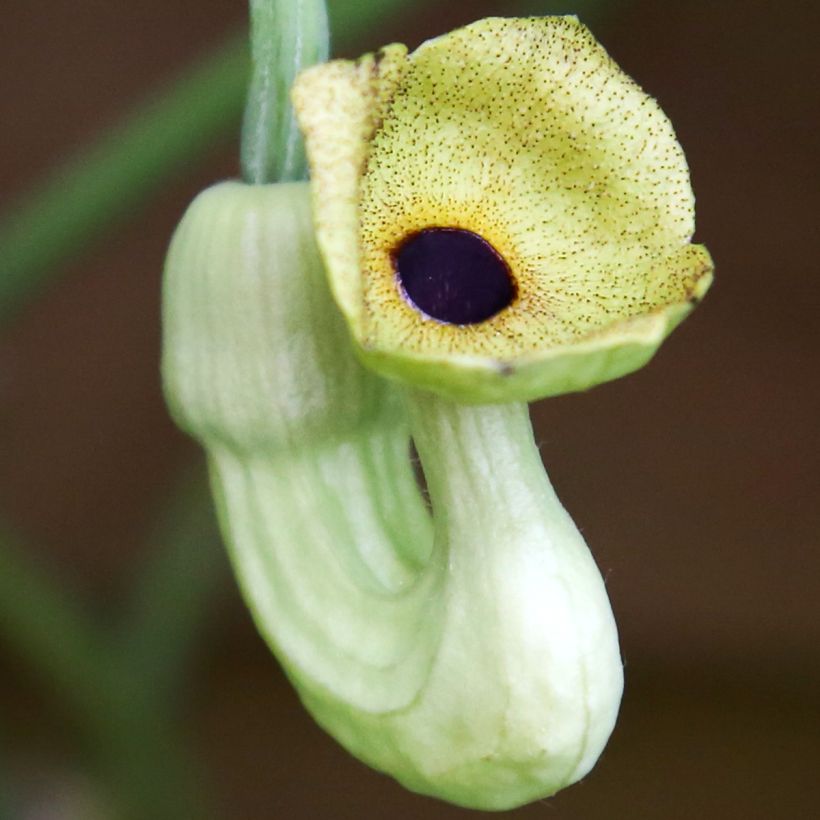

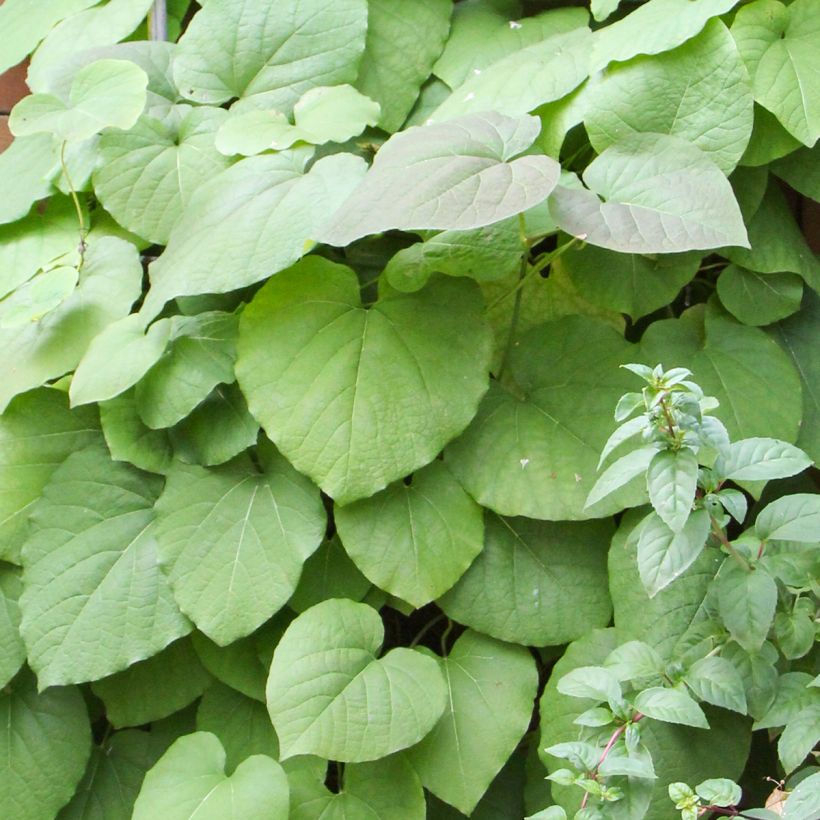

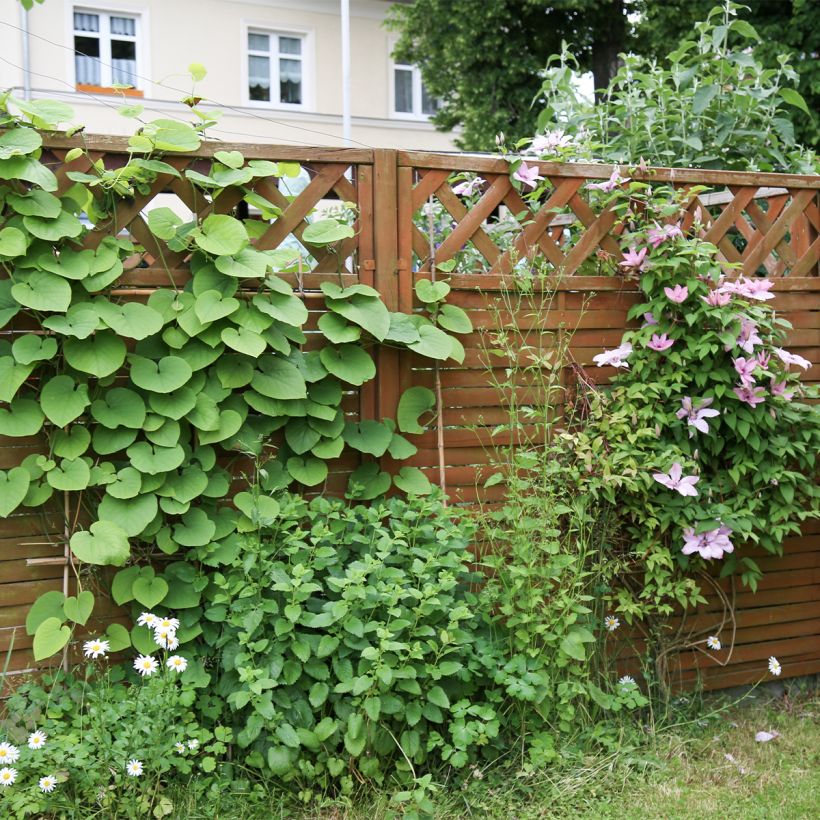

Plant habit
Flowering
Foliage
Botanical data
Aristolochia
macrophylla
Aristolachiaceae
Dutchman's Pipe, Pipe Vine, Big Sarsaparilla, Broad-leaved Birthwort, Wild Ginger
Aristolochia durior
North America
Planting and care
This Aristolochia can be planted in full sun or partial shade, in a rich and humus-rich garden soil, even with a tendency towards clay, which remains moist in summer and is rather well-draining. It tolerates limestone well. Watering 1 to 2 times a week is necessary during hot weather. The plant will appreciate a spring application of bonemeal and possibly fertiliser during flowering. Pruning can be done after flowering or at the end of winter if necessary. Be careful, Aristolochia is toxic!
Planting period
Intended location
Care
This item has not been reviewed yet - be the first to leave a review about it.
Haven't found what you were looking for?
Hardiness is the lowest winter temperature a plant can endure without suffering serious damage or even dying. However, hardiness is affected by location (a sheltered area, such as a patio), protection (winter cover) and soil type (hardiness is improved by well-drained soil).

Photo Sharing Terms & Conditions
In order to encourage gardeners to interact and share their experiences, Promesse de fleurs offers various media enabling content to be uploaded onto its Site - in particular via the ‘Photo sharing’ module.
The User agrees to refrain from:
- Posting any content that is illegal, prejudicial, insulting, racist, inciteful to hatred, revisionist, contrary to public decency, that infringes on privacy or on the privacy rights of third parties, in particular the publicity rights of persons and goods, intellectual property rights, or the right to privacy.
- Submitting content on behalf of a third party;
- Impersonate the identity of a third party and/or publish any personal information about a third party;
In general, the User undertakes to refrain from any unethical behaviour.
All Content (in particular text, comments, files, images, photos, videos, creative works, etc.), which may be subject to property or intellectual property rights, image or other private rights, shall remain the property of the User, subject to the limited rights granted by the terms of the licence granted by Promesse de fleurs as stated below. Users are at liberty to publish or not to publish such Content on the Site, notably via the ‘Photo Sharing’ facility, and accept that this Content shall be made public and freely accessible, notably on the Internet.
Users further acknowledge, undertake to have ,and guarantee that they hold all necessary rights and permissions to publish such material on the Site, in particular with regard to the legislation in force pertaining to any privacy, property, intellectual property, image, or contractual rights, or rights of any other nature. By publishing such Content on the Site, Users acknowledge accepting full liability as publishers of the Content within the meaning of the law, and grant Promesse de fleurs, free of charge, an inclusive, worldwide licence for the said Content for the entire duration of its publication, including all reproduction, representation, up/downloading, displaying, performing, transmission, and storage rights.
Users also grant permission for their name to be linked to the Content and accept that this link may not always be made available.
By engaging in posting material, Users consent to their Content becoming automatically accessible on the Internet, in particular on other sites and/or blogs and/or web pages of the Promesse de fleurs site, including in particular social pages and the Promesse de fleurs catalogue.
Users may secure the removal of entrusted content free of charge by issuing a simple request via our contact form.
The flowering period indicated on our website applies to countries and regions located in USDA zone 8 (France, the United Kingdom, Ireland, the Netherlands, etc.)
It will vary according to where you live:
- In zones 9 to 10 (Italy, Spain, Greece, etc.), flowering will occur about 2 to 4 weeks earlier.
- In zones 6 to 7 (Germany, Poland, Slovenia, and lower mountainous regions), flowering will be delayed by 2 to 3 weeks.
- In zone 5 (Central Europe, Scandinavia), blooming will be delayed by 3 to 5 weeks.
In temperate climates, pruning of spring-flowering shrubs (forsythia, spireas, etc.) should be done just after flowering.
Pruning of summer-flowering shrubs (Indian Lilac, Perovskia, etc.) can be done in winter or spring.
In cold regions as well as with frost-sensitive plants, avoid pruning too early when severe frosts may still occur.
The planting period indicated on our website applies to countries and regions located in USDA zone 8 (France, United Kingdom, Ireland, Netherlands).
It will vary according to where you live:
- In Mediterranean zones (Marseille, Madrid, Milan, etc.), autumn and winter are the best planting periods.
- In continental zones (Strasbourg, Munich, Vienna, etc.), delay planting by 2 to 3 weeks in spring and bring it forward by 2 to 4 weeks in autumn.
- In mountainous regions (the Alps, Pyrenees, Carpathians, etc.), it is best to plant in late spring (May-June) or late summer (August-September).
The harvesting period indicated on our website applies to countries and regions in USDA zone 8 (France, England, Ireland, the Netherlands).
In colder areas (Scandinavia, Poland, Austria...) fruit and vegetable harvests are likely to be delayed by 3-4 weeks.
In warmer areas (Italy, Spain, Greece, etc.), harvesting will probably take place earlier, depending on weather conditions.
The sowing periods indicated on our website apply to countries and regions within USDA Zone 8 (France, UK, Ireland, Netherlands).
In colder areas (Scandinavia, Poland, Austria...), delay any outdoor sowing by 3-4 weeks, or sow under glass.
In warmer climes (Italy, Spain, Greece, etc.), bring outdoor sowing forward by a few weeks.



































